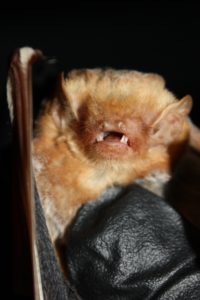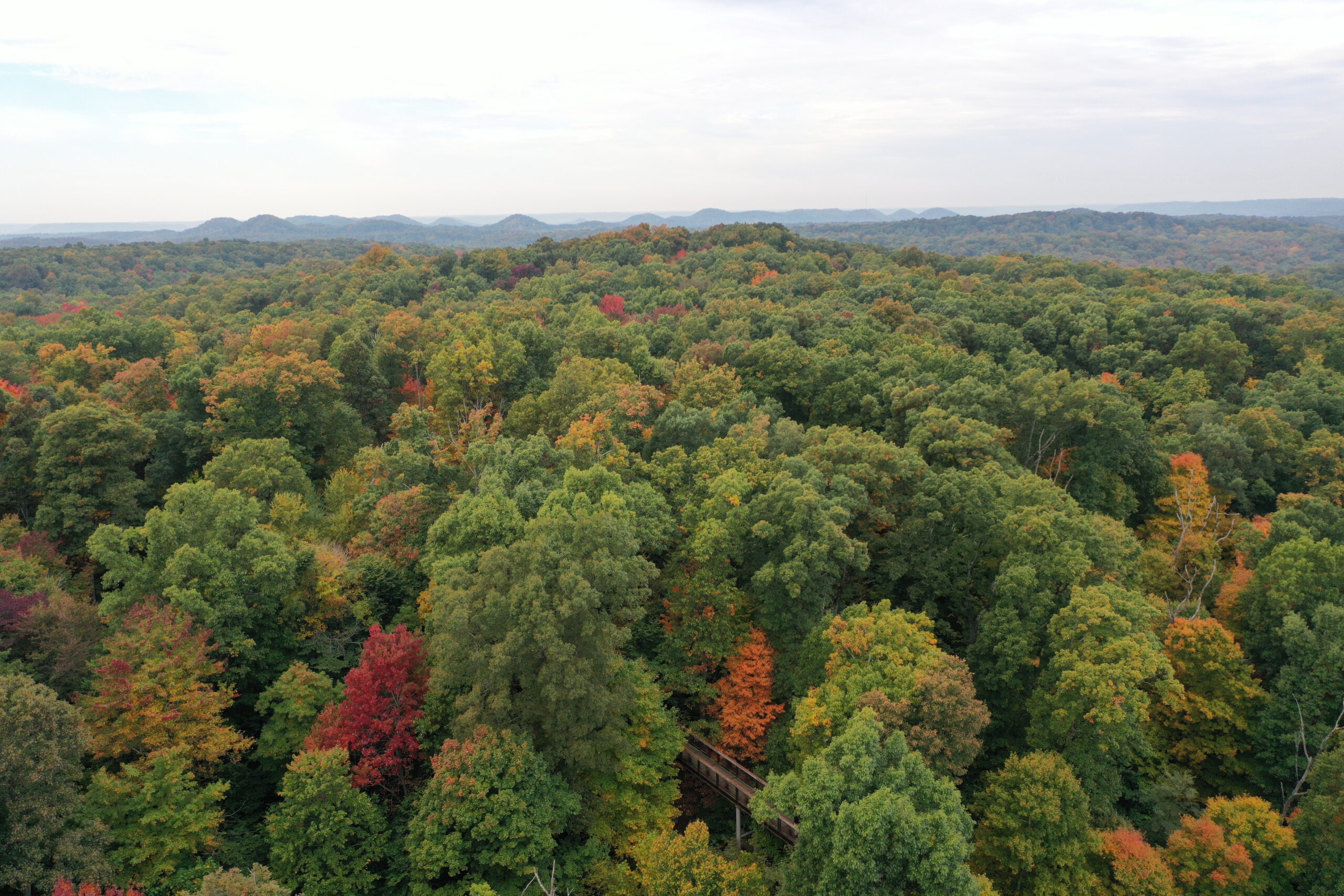By Bernheim

With the warmer weather many people have noticed the increase in bats seen flying at dusk here at Bernheim Forest. They can be seen by the lakes and along Forest Hill Drive on warm evenings in late winter and early spring. One of the common questions is, “Where do bats go in winter?” Many people would answer they hibernate in caves, and they would be partly right.
Bats do hibernate in winter, or more correctly they enter torpor. When they are in torpor, they reduce their body temperature, metabolic rate, respiration, and heart rate. The little brown bat can reduce its heart rate from over 1000 beats per minute in summer to less than 30 beats per minute in torpor. Bats can stay in torpor for months or for days, but they do not spend the whole winter asleep. They awaken during the winter at times to drink, fly, or move to a different hibernation site.
Though a lot of our bat species spend the winter in caves hibernating, there are several species that don’t use caves. Some cave bat species have been known to use man-made structures for hibernation, including attics, bridges, and mines. Other bat species, including the Red Bat, Hoary Bat, and Silver-haired Bat, hibernate in leaf litter, hollow trees, and other structures. The species that use hollow trees and leaf litter normally migrate from the northern states to the warmer southern states in fall, and return in the spring, since they hibernate in more exposed structures. Silver-haired Bats are normally seen in Kentucky in spring and fall, and are more transient, though some will overwinter. Red Bats and Hoary Bats are normally seen throughout the year in Kentucky and Bernheim. Normally red bats and hoary bats are the bats seen in late winter and early spring on warm evenings, but other bat species can also be seen during this time, especially Big Brown Bat, which hibernates in entrances of caves, frequently exiting on warm evenings.
So if you come out to Bernheim Forest on a warm evening this spring, don’t be surprised to see a bat flying over your head. Bats are an important part of our ecosystem, and Bernheim Forest has gone to great lengths to protect bat habitat in both summer and winter. We will continue to protect these amazing creatures throughout Bernheim Forest.

